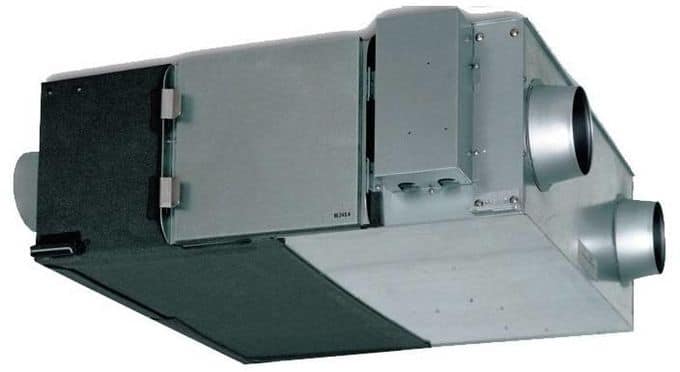Ventilation is needed to create a healthy indoor climate. It provides suction of fresh air from the street into the premises and then – output it outward, i.e. circulation. Unfortunately, the heat also goes away with the air, which is a significant drawback in the winter. Therefore, in the winter such ventilation is not very profitable. In summer, warm air complicates the work of air conditioners. The recuperator is designed to solve these problems.
The term recuperator comes from the Latin word recuperatio that means the inverse receipt or return. In our case, it`s a heat exchanger that returns the heat in the winter and prevents the heat penetration together with air in summer.
The functional scheme of the recuperator is a heat exchanger with two walls.
The walls provide heat exchange between the oppositely directed air streams. The difference between the temperatures of air flows activates the exchange of thermal energy. Respectively, cold air is heated, and the warm air is cooled. Additionally, the condensation removes moisture while cooling the warm air that condenses on the walls of the heat exchanger.
Schematics of HRU-ECCO recuperator illustrates heat recovery with forced air circulation.
Recuperation reduces losses through the ventilation system. In fact, this is an energy-saving technology that provides savings of up to 70%. The saved energy is reused in the technological process.
Classication
The recuperators have different power and design and are classified as follows:
– direct-flow and countercurrent movement of heat carriers (rotary recuperators);
– the tubular, ribbed, etc.;
– heat exchange between flows of air, fluids or gases.
A rotary recuperator is characterized by high efficiency, but has a large size.
It contains a short cylinder with densely packed layers of corrugated steel. The rotor is located in the direction of the device axis. Initially, the drum of recuperator skips through itself a warm air with premises, and then – the fresh cold air with street. Respectively, temperature of plates rises or falls, providing heat exchange.
Plate heat recuperator is worse suited for use in winter, because it often freezes from the side of the street. These models contain a cassette with channels for the passage of the supply and exhaust air.
They are separated by plates of galvanized steel sheets. Therefore, the streams do not mix. Heat exchange is carried due to simultaneous cooling and heating plate from different sides.
Plate heat recuperators are popular due to the low cost and compact design. However, these models are covered with frost at low external temperatures from -10 degrees or lower due to the formation of condensate in the air ducts. But the regular switching on the supply air fan or using of a bypass valve solves the problem of icing heat exchanger. In this case, the heat exchanger thaws due to warm exhaust air.
Efficiency of plate-like recuperators are approximately 60 %.
Recuperator is ideal for the garage because excessive moisture leads to corrosion, and the exhaust gases and fuel vapors are detrimental to health.
The operating principle of the recuperator is perfectly illustrated in this video.
